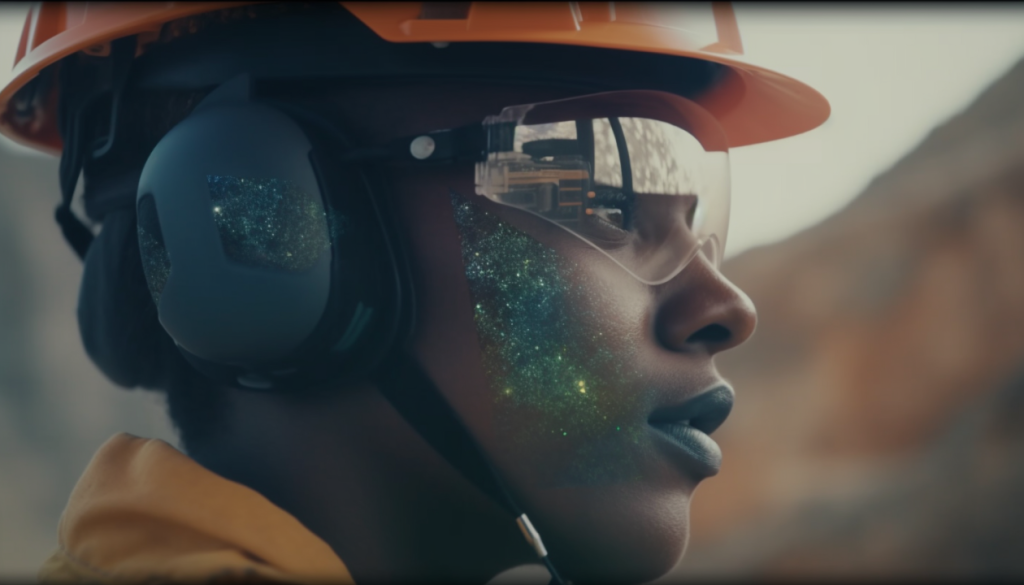
The mining industry has seen remarkable technological advancements in recent years, transforming the way larger mining operations are conducted. From automation and virtual reality to drones, big data analytics, robotics, and artificial intelligence. Innovative technologies are improving safety, increasing productivity, and reducing environmental impact. This article focuses on different cutting-edge technologies, their application in larger mining operations and their impact on the industry.
Automation
Automation is one of the most significant advances in mining technology. Automated machinery and equipment can operate independently and perform tasks such as drilling, blasting, and loading without the need for human intervention. This technology not only increases safety but also improves efficiency and productivity by reducing the time and cost of operations.
For example, autonomous haulage systems (AHS) are a type of technology used in the mining industry to automate the transportation of materials, primarily in open-pit mines. AHS vehicles are essentially large trucks or haul trucks equipped with advanced sensors, cameras, and computer systems that enable them to operate without a driver. They are controlled by a centralized computer system that communicates with the vehicles and coordinates their movements. These systems use GPS and other technologies to navigate haul trucks along predetermined routes, reducing the need for human drivers and improving safety.
Automated drilling and blasting systems are also being used in mining. These systems use sensors and algorithms to optimize drilling and blasting operations, reducing the risk of accidents and improving efficiency.
Virtual and Augmented Reality
Virtual and augmented reality (VR/AR) technologies are also being used in mining. VR technology allows miners to experience simulated environments that can help them identify potential hazards and plan mining operations. AR technology, on the other hand, allows miners to overlay virtual information onto the real-world environment, providing them with real-time data on equipment performance and environmental conditions.
For example, VR technology is being used to train miners in safety procedures and emergency response. AR technology on the other hand is being used to monitor the condition of equipment and provide real-time data on performance and maintenance needs.
Drones
Drones are being utilized to increase safety and efficiency in mining operations. Drones can be used to conduct aerial assessments of mining sites, map terrain, and track the performance of equipment. They can also be used to inspect difficult-to-reach regions, such as the tops of tall structures or mine interiors, minimizing the need for miners to access potentially risky areas.
For example, drones are being used to monitor the condition of tailings dams, which can be prone to failure and pose significant risks to the environment and nearby communities. By using drones to monitor these structures, mining companies can identify potential issues and take corrective action before a disaster occurs.
Big Data and Analytics
Big data and analytics are also being used in mining to improve decision-making and increase efficiency. By collecting and analyzing data from sensors and other sources, mining companies can gain insights into equipment performance, production rates, and other key metrics. This information can be used to optimize operations, reduce costs, and improve safety.
For example, predictive maintenance systems use big data and analytics to identify equipment failures before they occur, reducing downtime and maintenance costs. Real-time monitoring systems use sensors and other technologies to collect data on equipment performance and environmental conditions, enabling mining companies to optimize operations and reduce the risk of accidents.
Robotics
Robotics is another cutting-edge technology that is transforming the mining industry. Robotic systems can perform a range of tasks, from inspecting equipment to performing complex mining operations. By using robotics, mining companies can minimize the need for human workers in dangerous or remote locations and increase efficiency and productivity.
For example, robotic mining vehicles are being used to extract minerals from underground mines. These vehicles can operate in challenging environments and can be controlled remotely, reducing the risk of accidents and improving efficiency.
Artificial Intelligence
Finally, artificial intelligence (AI) is being applied in mining to improve decision-making and efficiency. AI algorithms are capable of analyzing data from sensors and other sources, predicting equipment faults, and optimizing production rates. Mining businesses can use AI to reduce downtime, improve safety, and maximize profits.
AI-powered optimization systems, for example, may evaluate massive volumes of data on production rates, equipment performance, and other variables to pinpoint areas for improvement. These systems can then make recommendations on how to improve operations, cut costs, and boost efficiency.
To conclude, cutting-edge technology is reshaping the mining industry. Automation and virtual reality, as well as drones and artificial intelligence, are enhancing safety, increasing efficiency, lowering the environmental impact of mining operations and boosting profitability. As technology advances, we may anticipate even more creative ideas that will further revolutionize the extractives industry.
